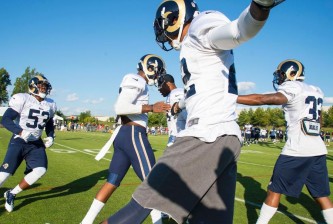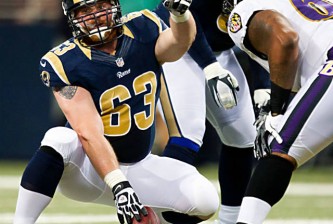|
Sam Bradford, playing in Pat Shurmur's west coast offense in his rookie year, was compared to a Lamborghini racing around a supermarket parking lot. Josh McDaniels was brought to St. Louis to change all of that. In his first offseason with the Rams, McDaniels made an immediate impact on the Rams' draft board… but perhaps not quite the impact we expected. The Patriots' and Broncos' offenses under McDaniels had never been known to prioritize tight ends, and yet an offensive weapon at the position was the Rams' first pick. Pettis and Salas, the Rams' next two picks, line up most often from the slot. Slot receivers and tight ends, those were areas we were already pretty strong in, right? Billy Devaney seeks to explain: "There's all different ways that you spread a defense out," he said. "You can spread them out vertically and horizontally. Wide receivers don't have to be the ones stretching a defense all of the time. I think Josh used a great term in one of our meetings, about 'stressing' a defense. Not just stretching it, but putting stress on a defense. And that's what we're trying to do, just by adding players who are multi-dimensional." The hidden takeaway here: usage matters as much, if not more, than specific personnel. So let's see if McDaniels' past offers clues to the Rams' future. |
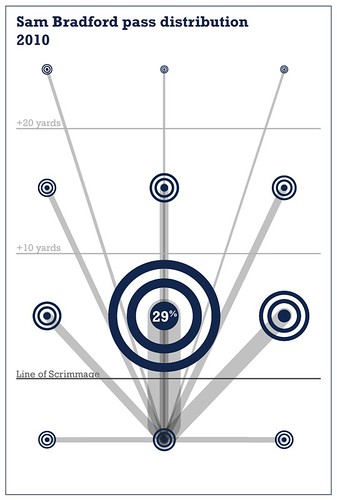 |
|
As you can see from the Rams' 2010 passing chart (data from Pro Football Focus), Sam Bradford might well have been wearing bifocals in the pocket. A huge bulk of his targets came within ten yards of the line of scrimmage, if not behind it. Says Mike Clay of PFF, "I'd bet $1000 Bradford is dead last though among qualified QBs" in average target distance. But Kyle Orton, by no means a better talent, threw for more yards and more touchdowns than Bradford in three fewer games. The difference, as you can see, was the "stress" that Orton's targets placed on the defense by being much less predictable, by almost never targeting behind the line, and by peppering the intermediate and deep zones of the field equally. An article by Clay shows where on the field the league's top receivers did their work. The contrast between Bradford's favorite target and Orton's is marked: 20+ yards: Brandon Lloyd 28%, Danny Amendola 4% 10-19 yards: Brandon Lloyd 48%, Danny Amendola 13% 0-9 yards: Danny Amendola 64%, Brandon Lloyd 24% <0 yards: Danny Amendola 19%, Brandon Lloyd 1% So the remaining question is who steps into Lloyd's role, but as many have already pointed out, Lloyd's ability to be a deep threat has nothing to do with his 40 time (4.61, roughly the same as Pettis and Salas). Indeed, Mark Clayton might be the best fit with his skill on the outside and veteran experience in route running. But there's still the tight end question. We hear that McDaniels wants to replicate the danger that New England created with their two tight ends, Gronkowski and Hernandez. And while that was very successful, in terms of "stressing" the defense with target distribution, the Patriots' pass chart looks shockingly similar to the Rams'. In fact, Brady's predilection for targeting the short middle was even higher than Bradford's, especially after trading Randy Moss away. Shurmur loved two-tight end sets, of course, but with the undrafted Daniel Fells and half of a fifth-round pick in Mike Hoomanawanui, we can point to the weapons he had at his disposal. But we can also point to a lack of faith in establishing the threat of the deep ball — a lack of "stress" on the opposing defense. Mostly, though, people will point to the 517 points that the Patriots scored with their offense, almost double the Rams' with the same basic pass distribution. There is little doubt the Rams will get more vertical next season. And hopefully much more productive. But when looking at the shape of the offense, there are actually two very different directions it could go. |
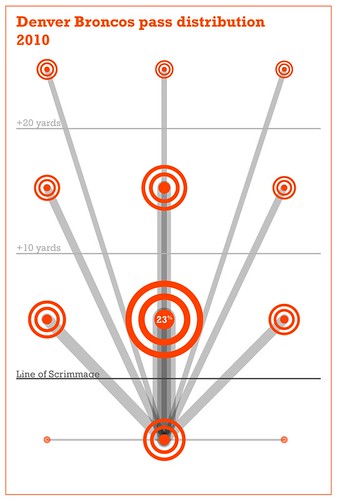 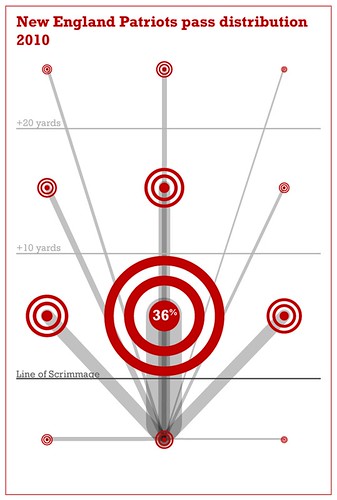 |





















